Thailand and elephants are practically synonymous. Whether working or worshipped, elephants have coexisted closely with humans in this part of the world for millennia. Although naturally gentle and intelligent, their size and strength create unique challenges in managing as well as living side by side with them. These giants cannot be truly domesticated in the way that cattle and dogs have been bred for domestication. The close relationship of man and elephant has not been without conflict, and human-elephant conflict (HEC) can often lead to loss of life on both sides. The relationship between mankind and elephant has, perhaps, been missing a third player all along — bees. More on that, in a moment.
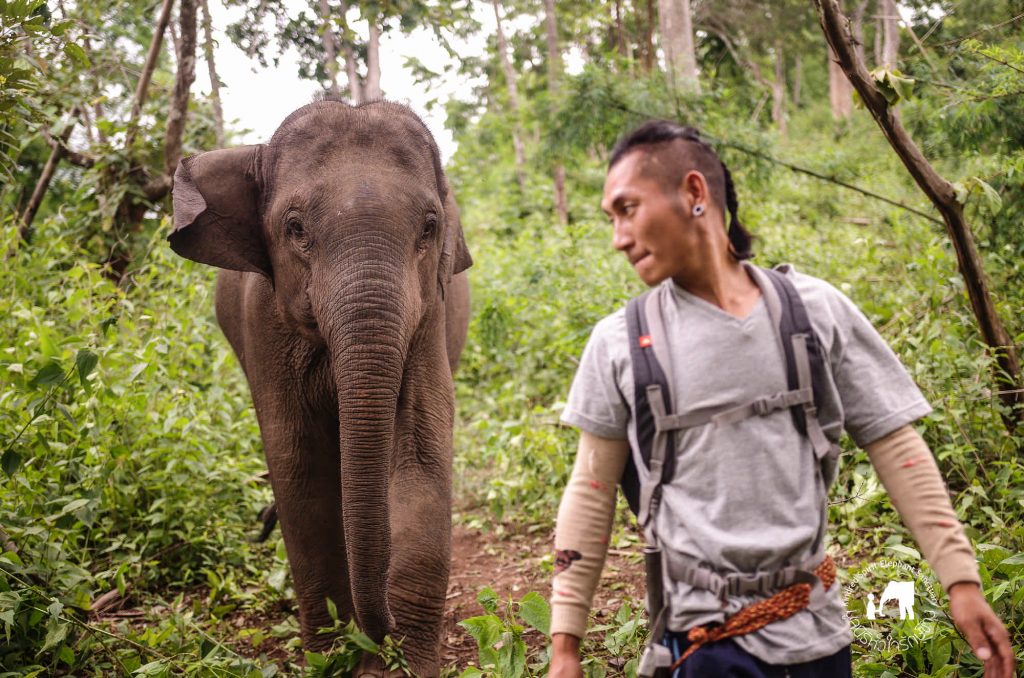
Human elephant conflict is when elephants and humans (or human interest) is threatened by one another. For example, an elephant wanders into a human field and raids the crops for food, leading villagers to engage with them in an attempt to frighten them away from valuable crops. This alarming encounter can disturb and frighten an elephant, and it may react violently at the perceived threat, often leading to injury or death. This can have a compounded effect by making other elephants in the group frightened by and aggressive towards humans and vice versa — exasperating and perpetuating conflict.
Human encroachment on wild elephant rangeland due to population growth and economic activities such as farming is one factor in human-elephant conflict. Even semi-wild elephants such as those maintained on sanctuaries with a high degree of freedom can roam too far and come into contact — and conflict — with neighbouring communities. Some elephant experts accept that because of deforestation and the size of the elephant population — about 6,700 in Thailand — there simply isn’t enough suitable land for every living elephant today to exist in the wild, even if these elephants could be released overnight. Although there are more elephants living in captivity (about 3,700) in Thailand than in the wild (3,000), wild elephants frequently come into conflict with humans because of their dwindling territory. Releasing the captive elephant population would more than double current numbers in the wild and increase conflict exponentially.
Generating a Buzz
Keeping elephants away from human-inhabited areas is neither simple nor inexpensive; elephants can outsmart electric fences by felling a tree and weighing down the electrified lines and masonry enclosures are expensive and not practical for the vast areas that elephants roam. Fifteen years ago, in Kenya, a group of ranchers and environmental scientists stumbled upon the idea of bee hive fencing to protect human-occupied zones from elephants. African elephants remain wild, and have a more independent relationship of humans. Accordingly, the first bee hive fences were designed to keep wild elephants out of crops and villages using African bees as a deterrent. Since then, the model has spread across Africa and Asia.
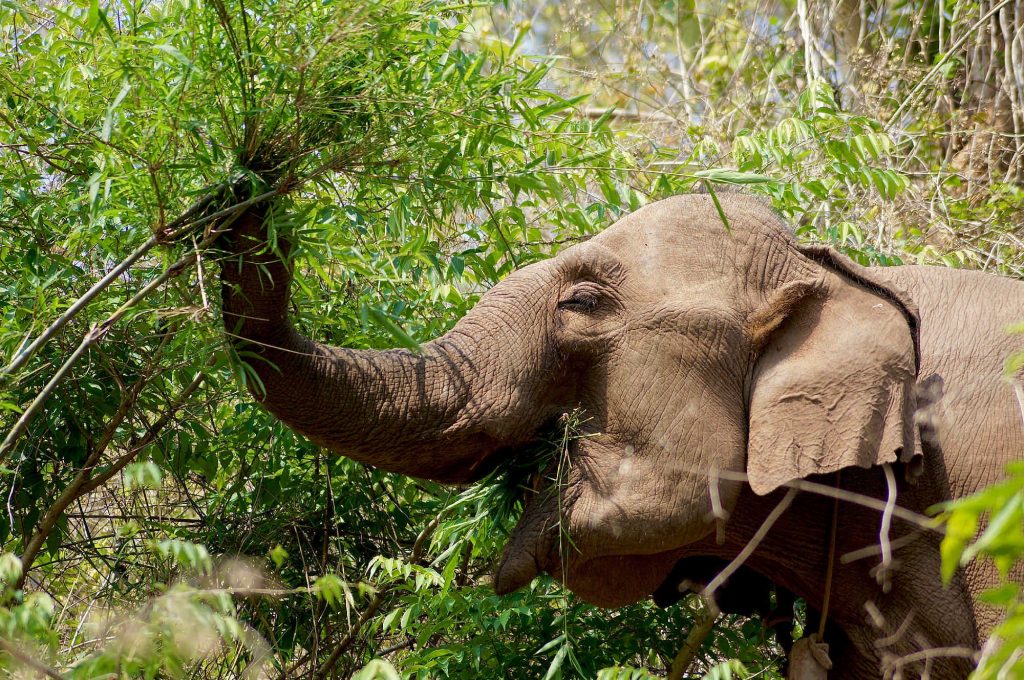
The bee hive fence uses one simple and quirky fact about elephants to control them — they are, apparently, terrified of bees. The fences are particularly suited to the elephant for many reasons. First, elephants have famously long memories, meaning that deterrent is an effective means of enforcing behaviour. This combined with the fact that they are social creatures, any negative experience one elephant has with bees will deter an entire herd from going anywhere near them. Second, the sound of buzzing bees can be heard by an elephant up to 1-2 kilometres away. Third, elephants are very sensitive around their eyes, ears, and inside their trunks. This means that elephants can experience intense pain and irritation from a bee attack, while not causing any long-term harm. A 2007 study by bee fencing expert Dr. Lucy King, of Oxford University, and colleagues, found that, “The evidence suggests that elephants are aware of bees, they retain a memory about bees and they can identify bees by their sound alone. Their response suggests that they remember or associate the sound of bees with a negative historical event, be it individual or collective, to which the correct response was rapid retreat.” So, although it may seem counterintuitive that such a large animal is controlled by such a small insect, it is important to note that the bee is almost perfectly suited to the task.
The bee hive fence works using a simple mechanism. A series of bee hive boxes are constructed, then suspended and linked together by several wires. Bee hives are placed in each box. The boxes are positioned so that if an elephant disturbs either the hive box or the wire between them, all the boxes are tilted at once, releasing hordes of angry bees, much to the elephant’s surprise. The bees will not kill the elephant, and the irritation of the attack will eventually subside untreated. The elephant, however, will remember his encounter with the small but mighty warriors of the bee colony. The bee hive fence’s primary method of deterrence, however, is the simple presence of the bees, which elephants can hear from a distance. The elephant that persists is met with a wave of angry bees.
Busy Little Bees
Bee hive fencing is more than just an elephant deterrent, as I learned from Rachaya Arkajak, researcher and head of the fencing project at Phuluang Wildlife Research Station, Department of National Parks, Wildlife and Plant Conservation, Thailand, the country’s first bee hive fence project. Today, there are four such wild elephant bee hive fences around Thailand: two sites each in Chantaburi and Loei provinces, respectively. Rachaya explained that bee hive fencing has a tripartite goal: protect crops and humans, create an alternative income source for villagers, and eliminate human elephant conflict. In Thailand, there are at least 40 areas experiencing human elephant conflict, with elephants roaming outside of protected areas.
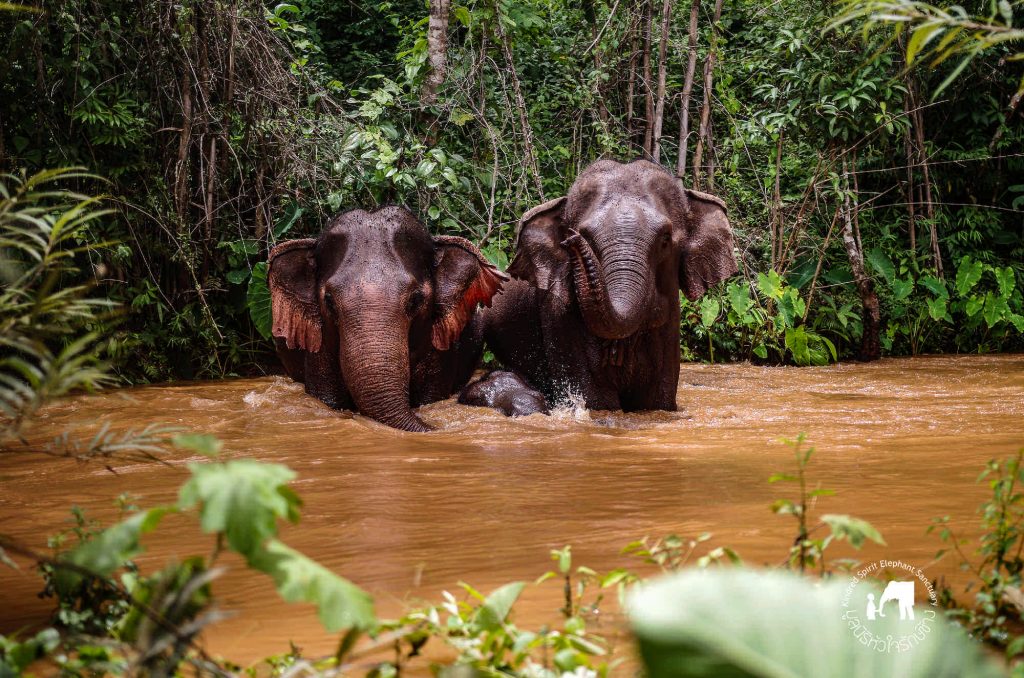
According to Rachaya, communities benefit from the bee hive fence in several ways starting with the most important, which is safety. But this innovative solution is also relatively easy to craft and with minimum guidance and cost, the — ahem — barrier to entry to bee fencing is quite low. Today, 14 areas in Thailand are receiving bee hive fence training. The honey can also be harvested and sold by the villagers as an additional source of income — Princess Sirindhorn already a customer of bee hive fencing honey. Outside inputs to the community are generally the bees themselves and materials such as bee-keeping protective equipment and the wire used in the fencing. The cost of knowledge transfer and materials are the two costs which are on the most part provided by NGOs or other funding source. Because imported bees may not adapt well to the new environment, additional costs down stream may include a replenishment of the bees.
The Kindred Spirit Elephant Sanctuary in Chiang Mai Province will be the first in Thailand to implement bee fencing for a population of semi-wild elephants. Kindred Spirit is among a minority of elephant sanctuaries that does not allow riding or shows with elephants but invites visitors to hike 1-2 hours up to the elephants in their natural environment in the forest, to spend a few hours observing them as they go about their day. Each elephant at the sanctuary has its own mahout, which has been the elephant’s minder most if not all of each other’s lives.
The sanctuary was co-founded by partners Kerri McCrea and Sombat. Sombat is the head mahout for the sanctuary, and his Karen hilltribe family has kept elephants for generations. Kerri is the sanctuary’s manager and has also spent her life and career in the care of animals. It is hoped that bee hive fencing holds the potential to enable the elephants to roam more freely in their current habitat, particularly at night when sanctuary elephants are typically chained or enclosed to prevent them from wandering into harm’s way. They also anticipate economic benefits for the nearby villagers.
Most elephants in sanctuaries can be described as doing some work — whether riding or performing for entertainment. While some sanctuaries are moving away from the optics of daytime chaining, relying instead on the mahout to control the elephant, it is still essential that elephants in close proximity to people are kept chained at night. The bee hive fence may lessen the time that captive and semi-wild elephants spend chained each night, allowing them to roam more freely while reducing the risk associated with that freedom.
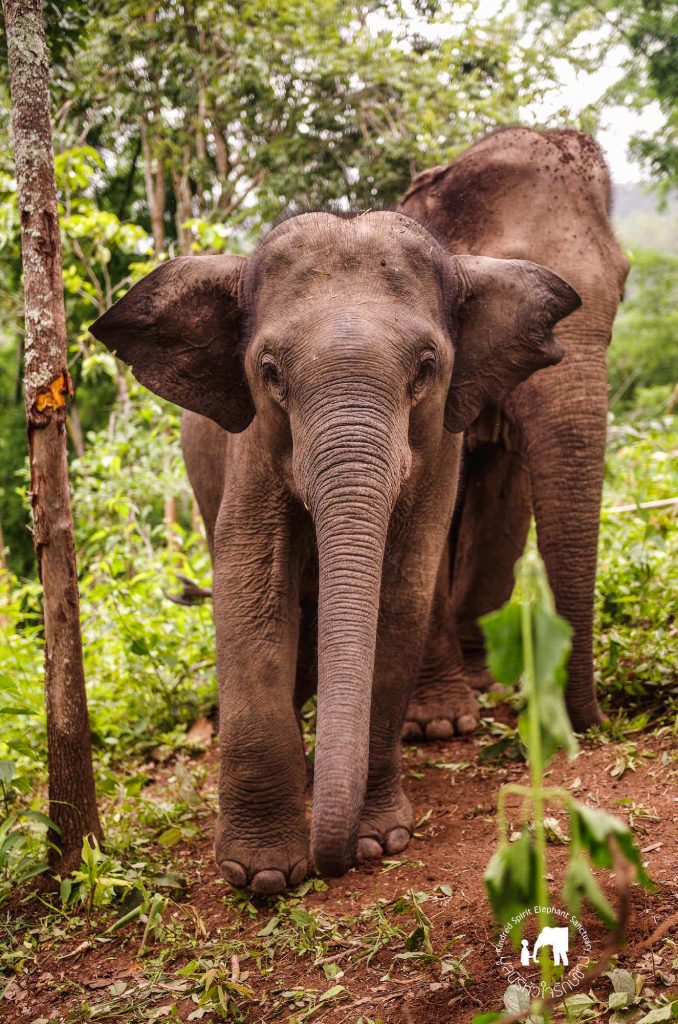
But before any of that can happen, Kerri, Sombat and their team of volunteers and villagers have to set up and test the project. Things can go wrong. The bees, apis mellifera ligustica imported from Italy like those used in Rachaya’s first successful project at Phuluang, may not adapt well to their new habitat and colony collapse could pose a major setback. Locals must be educated on how to keep bees and manage the fences, then become successful beekeepers. All the materials and equipment must be procured and brought to site. And then there is the most critical test: How will the elephants respond to the new bee hive fences?
The groundwork in the community has been laid. “We held a meeting with the local village just to gauge their reaction about it to see if they were actually going to be interested in helping us do this project,” Kerri explained, stressing the criticality of initial buy-in with a firm turn in her Northern-Irish lilt, “Because if they’re not interested, then it’s not really worth it to pursue any further. We were actually surprised with how much interest we got from the village.” Together, the villagers decided which family would be first to test the bee hive fence, then second, and so on, with most of the village eager to participate.
Wiwatchai “Book” Sakchintavakul represents his family, who will be the first in the village to implement the bee hive fence. Book, a poised and astute young man in his twenties, Book is forthright in saying that he knows nearly nothing about beekeeping but stresses that he is eager to learn. His gently Thai-accented English is tinged with curiosity and confidence. Book knows this will be a learning curve, but he is ready to try. People from his village rely largely on growing corn for their livelihood. To bring their corn to market, villagers must buy large trucks for hauling. The trucks then take years to repay, leaving many villagers in debt and eager for an alternative source of income. Book, like his fellow villagers, sees opportunity in bee hive fences to improve his family’s life.
Parallel to all this, Kerri and Sombat will need to conduct research and keep track of how the elephants react to the bee fences. They are keenly aware that their project holds the potential to also yield major contributions to elephant conservation research and the ongoing international effort to reduce human elephant conflict. Camera traps will be arranged to help monitor the elephants’ response to the fences and other behaviours. A workshop to train local villagers on bee hive fencing and bee keeping will be conducted by rangers from the Department of National Parks, Wildlife and Plant Conservation, who have been involved in the Phuluang and other bee fencing projects. Kerri and Sombat will also partner with other organisations to set up their research methodology. The unique nature of their sanctuary’s ambitions has catapulted Kerri and Sombat into truly uncharted waters. The pair set out to do things differently, so perhaps it is no surprise that they are about to find themselves on the leading edge of HEC research in Thailand.
Operation Jumbo
As Citylife has previously reported, Thailand’s captive elephants are finding themselves in a difficult and complex situation. There is insufficient land for their mass release, but little oversight in their captivity. Joanna MacLean of Asian Captive Elephant Working Group (ACEWG) explained the problem this way, “If you closed all the camps, it would be bedlam,” in the past, she continues, “If you had an elephant and you couldn’t feed it, where did you take it? Begging in the streets.” A sight which was ubiquitous across Thailand until about a decade ago following a national crackdown.
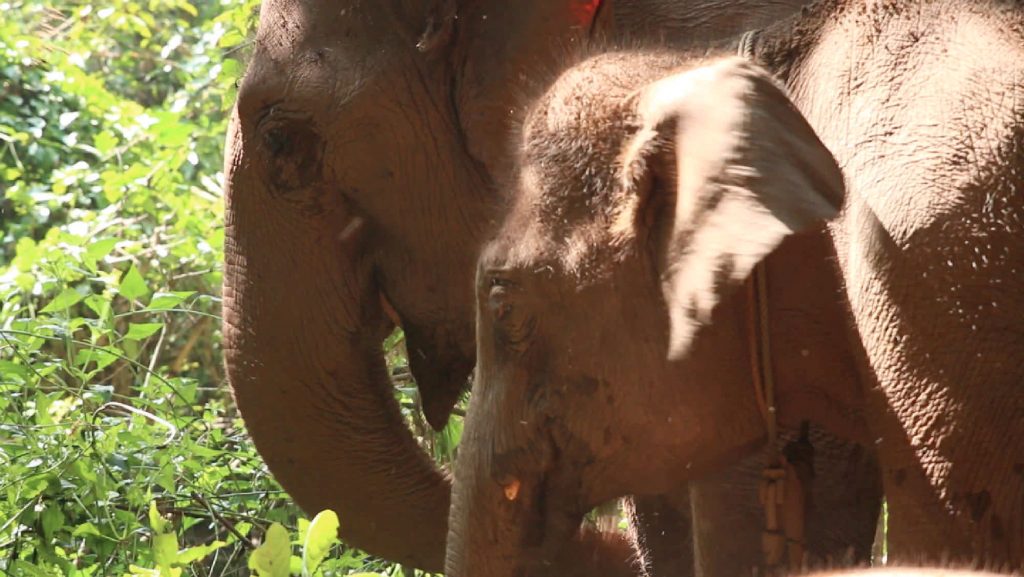
ACEWG and the research being done by Dr. Chatchote Thitaram and Pakkanut Bansiddhi of the Faculty of Veterinary Medicine at Chiang Mai University with Janine Brown of the Smithsonian Conservation Biology Institute in the United States, are working to create sustainable and humane standards for captive elephants. But for now, elephants in camps have little formal protection.
Seeing this heartbreaking situation first-hand, Kerri and Sombat decided to start a small sanctuary with elephants from Sombat’s family. Here, at Kindred Spirit Elephant Sanctuary, the elephants set the pace of the day, and visitors observe them. The five elephants in Kindred Spirit Sanctuary enjoy 14 km2 of land on which to roam. The sanctuary is also active in the community, teaching English in the local school which cannot otherwise afford a foreign teacher and providing English language skills to local homestays. Visitors observe the elephants and learn about the complex reality facing them. The elephant owners receive pay for their elephants, providing income to support their families; the elephants no long have to work but spend their days in the forest with friendly visitors watching them, interacting and, ideally, taking knowledge about elephants and ethical sanctuary management back to their home countries.
Kindred Spirit Elephant Sanctuary occupies an important place in the discussion on the conservation and treatment of captive elephants. Can their model be scaled to allow captive elephants more freedom and better quality of life? Can bee hive fencing improve the lives of captive elephants by enabling them to remain unchained and unenclosed at night? Is it a financially viable and healthy model for managing elephants in captivity? These are just some of the key questions Kerri and Sombat are facing as they prepare to launch their bee hive fence project.
As tourist season notches into high gear hear in Northern Thailand, and the elephant photos and selfies start to fill our social media feeds, people like Kerri, Sombat, Joanna, Rachaya and Dr. Chatchote continue the work of brining humans and elephants into greater harmony. Rachaya’s infectious optimism speaks for such efforts: “I think the point of this story is, love another species,” she told us, “When we use love for directions, we win.”
Citylife is pleased to support the pioneering work of Kindred Spirit Elephant Sanctuary as one of the six charity recipients of the 2018 Citylife Garden Fair.